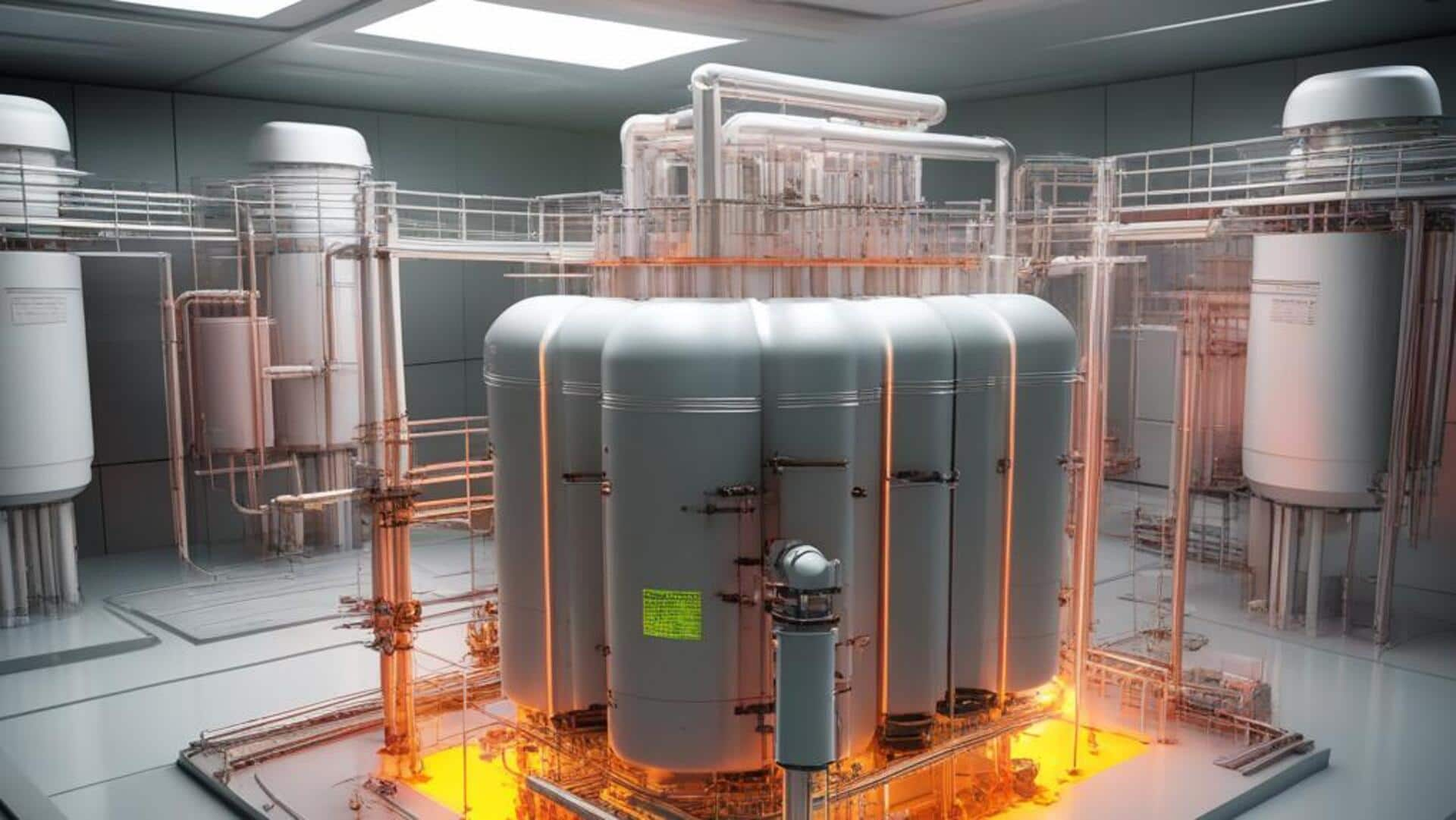
India deploying modular nuclear reactors to hit net-zero by 2070
What's the story
India will deploy between 40 and 50 small modular nuclear reactors (SMRs), as part of its strategy to achieve net-zero emissions by 2070.
The primary purpose of these SMRs is to replace existing captive thermal power plants.
A senior industry official revealed that the current design of the Pressurized Heavy Water Reactor (PHWR) is being updated using 3D design platforms, for easy deployment even in older thermal power plants used by industries like steel and cement.
Joint venture
Tata Consulting Engineers and DAE collaborate on project
The Department of Atomic Energy (DAE) is collaborating with Tata Consulting Engineers to redesign the PHWRs and create the Bharat Small Modular Reactor.
Amit Sharma, CEO of Tata Consulting Engineers, stated that they plan to "take the old design of the PHWR and then reconfigure and redesign it to be modular, scalable, and safety-aligned to post-Fukushima standards."
This initiative aims at producing 40-50 reactors within a span of seven to eight years.
Public-private partnership
Government to partner with private sector for SMRs
Finance Minister Nirmala Sitharaman, in her Union budget presentation last month, announced that the Centre would partner with the private sector to establish Bharat Small Reactors and for research and development of SMRs.
She also stated that the government would collaborate with the private sector for research and development of newer technologies for nuclear energy.
This move signifies a strong commitment toward energy transition.
Technological advancement
Redesigning PHWRs using advanced 3D design platforms
Engineers are set to redesign the PHWR using advanced 3D design platforms that were not available four decades ago when these reactors were initially designed.
The Nuclear Power Corporation of India Limited has so far set up 16 220-MWe PHWRs, two 540-MWe PHWRs, and two 700-MWe PHWRs.
An additional 14 more PHWRs of each with a capacity of 700 MWe are under various stages of implementation, and are tipped to be commissioned progressively by March 2032.